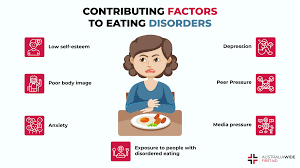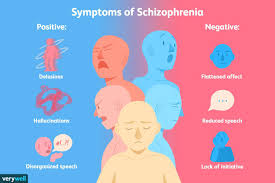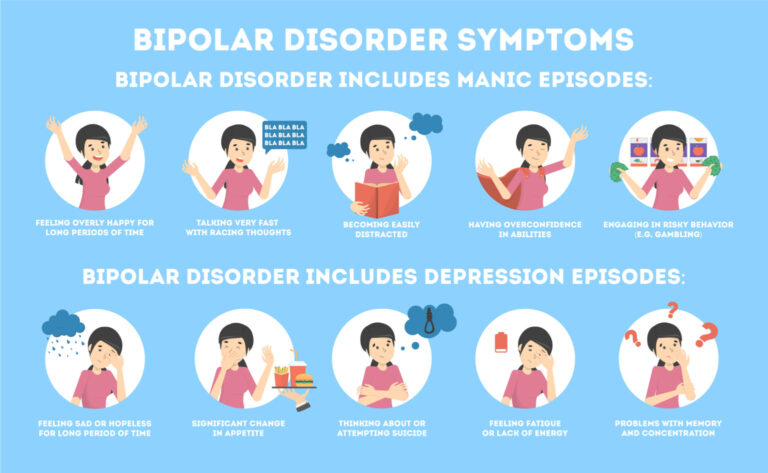
Table of Contents
Eating disorders are serious mental health conditions that affect a person’s relationship with food, body image, and self-esteem. They are not just about eating habits — they involve emotional, psychological, and physical struggles that can lead to life-threatening complications.
Globally, more than 70 million people suffer from eating disorders, and cases are rising, especially among teenagers and young adults. Social pressure, unrealistic beauty standards, and stress often fuel the problem. Early awareness and treatment can save lives.
🔎 Causes / Risk Factors
Eating disorders develop from a combination of genetic, psychological, and social factors:
- Genetics: Family history of eating disorders or mental illness.
- Psychological Factors: Low self-esteem, perfectionism, anxiety, or depression.
- Cultural & Social Pressure: Unrealistic beauty standards, social media influence, peer comparison.
- Trauma & Stress: Abuse, bullying, or high-pressure environments.
- Sports & Professions: Athletes, models, dancers often face pressure to maintain a certain body shape.
- Biological Factors: Hormonal imbalances or brain chemistry irregularities.
⚠ Common Issues / Symptoms
Eating disorders appear in different forms. The most common types include:
🔴 Anorexia Nervosa
- Extreme restriction of food intake.
- Intense fear of gaining weight.
- Distorted body image (“feeling fat” even when underweight).
- Rapid weight loss, weakness, brittle nails, and hair fall.
🔵 Bulimia Nervosa
- Binge eating (eating unusually large amounts of food in short time).
- Compensatory behaviors like vomiting, over-exercising, or laxative use.
- Feeling out of control during binges, followed by guilt or shame.
- Tooth decay, sore throat, digestive issues.
⚡ Binge Eating Disorder (BED)
- Eating large quantities of food quickly and secretly.
- Eating even when not hungry.
- Feeling distressed or guilty after overeating.
- Weight gain and related health problems (obesity, diabetes).
🚨 General Symptoms Across Disorders
- Obsession with calories, dieting, or body shape.
- Social withdrawal and avoiding meals with others.
- Fluctuations in weight.
- Irregular or missed menstrual cycles (in women).
- Depression, anxiety, or suicidal thoughts.
📊 Table 1: Myths vs Facts
| Myths | Facts |
|---|---|
| Eating disorders are just about food | They are mental health illnesses with psychological roots |
| Only women get eating disorders | Men and children can also develop them |
| People with eating disorders are always underweight | Many sufferers have normal or high weight |
| It’s a choice or attention-seeking | Eating disorders are not choices, they are serious conditions |
| Recovery is impossible | With treatment, full recovery is possible |
📋 Table 2: Do’s and Don’ts
| Do’s ✅ | Don’ts ❌ |
|---|---|
| Seek professional help (psychiatrist, therapist, nutritionist) | Hide or deny symptoms |
| Build a supportive, judgment-free environment | Comment negatively on body size or eating habits |
| Focus on health, not appearance | Obsess over calories or weight |
| Encourage balanced meals and routine | Encourage crash diets or excessive exercise |
| Talk openly about mental health | Stigmatize or shame the person |
🌱 Prevention / Awareness Tips
- Promote body positivity – Accept and celebrate all body types.
- Educate early – Teach children healthy eating habits and self-esteem.
- Limit harmful social media exposure – Unfollow toxic accounts promoting unrealistic standards.
- Encourage balanced lifestyle – Exercise and nutrition for health, not just appearance.
- Open conversations – Talk about stress, emotions, and body image without judgment.
- Seek early help – Don’t wait for the disorder to worsen before consulting professionals.
💊 Treatment / Care
Eating disorders are treatable with a multi-disciplinary approach:
- Psychotherapy:
- Cognitive Behavioral Therapy (CBT) to change thought patterns.
- Family-Based Therapy (FBT) for adolescents.
- Group therapy for peer support.
- Medical Care:
- Hospitalization if weight is dangerously low or if there are heart complications.
- Nutritional rehabilitation with a diet plan.
- Medications:
- Antidepressants or anti-anxiety medications (if needed).
- Long-term Support:
- Consistent therapy, lifestyle changes, and relapse prevention.
📖 Case Study / Real-Life Example
In the U.S., singer Demi Lovato openly shared her battle with bulimia and body image struggles. With therapy and treatment, she became a strong advocate for body positivity and mental health.
In India, awareness is growing too — campaigns by NGOs and schools are helping teenagers recognize early signs of eating disorders and seek help without shame.
❓ FAQs
Q1. Are eating disorders only about weight?
A1. No. They are complex mental illnesses involving food, emotions, and self-image.
Q2. Can men have eating disorders?
A2. Yes, though underdiagnosed, men also suffer from anorexia, bulimia, and binge eating.
Q3. Is dieting the same as an eating disorder?
A3. No. Dieting can trigger disorders, but eating disorders are more extreme and harmful.
Q4. Can someone recover fully?
A4. Yes. With therapy, medical care, and support, people can recover and live healthy lives.
Q5. At what age do eating disorders begin?
A5. Most cases start in adolescence or early adulthood, but children and older adults can also be affected.
Q6. Are eating disorders dangerous?
A6. Yes, if untreated, they can lead to heart failure, organ damage, or even death.
🏁 Conclusion
Eating disorders are serious but treatable conditions. They are not lifestyle choices, but illnesses that need compassion, awareness, and medical care.
💡 Remember: Healthy bodies come in all shapes and sizes. Respect, support, and awareness can save lives.


